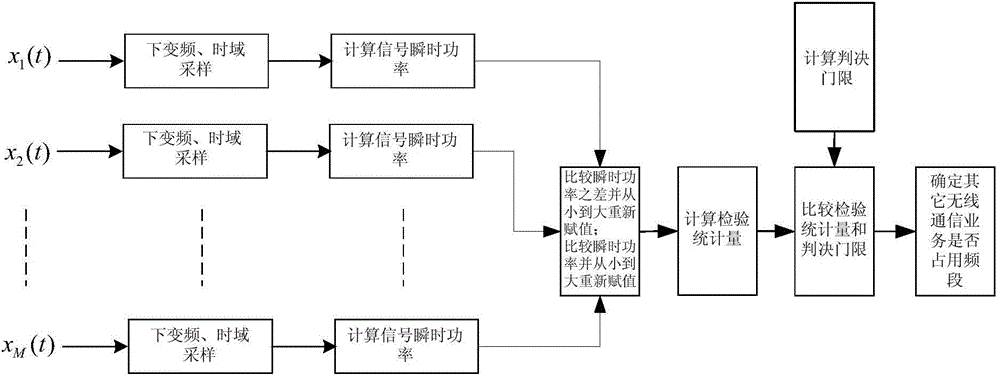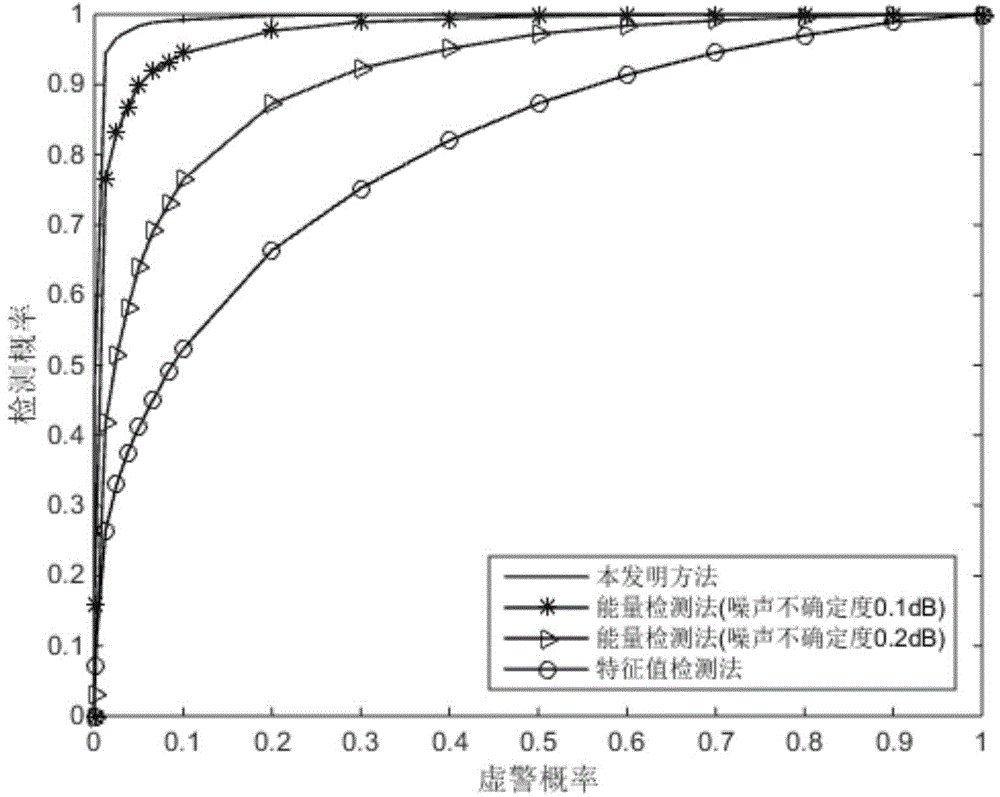Frequency spectrum sensing method based on multi-antenna instantaneous power
An instantaneous power and spectrum sensing technology, applied in the field of spectrum sensing, can solve the problems of low correlation of received signals, degradation of spectrum sensing performance, poor spectrum sensing performance, etc., and achieve the effect of overcoming poor spectrum sensing and good spectrum sensing performance
- Summary
- Abstract
- Description
- Claims
- Application Information
AI Technical Summary
Problems solved by technology
Method used
Image
Examples
Embodiment Construction
[0019] The present invention will be further described in detail below in conjunction with the accompanying drawings and embodiments.
[0020] A spectrum sensing method based on multi-antenna instantaneous power proposed by the present invention, its overall realization block diagram is as follows figure 1 As shown, it includes the following steps:
[0021] ①Assume that there are M receiving antennas in the cognitive radio system, all of which are used to receive continuous radio frequency signals in the time domain, where M represents the total number of receiving antennas in the cognitive radio system, and M≥2.
[0022] figure 1 middle x 1 (t) represents the time-domain continuous radio frequency signal received by the first receiving antenna, x 2 (t) represents the time-domain continuous radio frequency signal received by the second receiving antenna, x M (t) represents the time-domain continuous radio frequency signal received by the Mth receiving antenna.
[0023] ② ...
PUM
 Login to View More
Login to View More Abstract
Description
Claims
Application Information
 Login to View More
Login to View More - R&D
- Intellectual Property
- Life Sciences
- Materials
- Tech Scout
- Unparalleled Data Quality
- Higher Quality Content
- 60% Fewer Hallucinations
Browse by: Latest US Patents, China's latest patents, Technical Efficacy Thesaurus, Application Domain, Technology Topic, Popular Technical Reports.
© 2025 PatSnap. All rights reserved.Legal|Privacy policy|Modern Slavery Act Transparency Statement|Sitemap|About US| Contact US: help@patsnap.com



